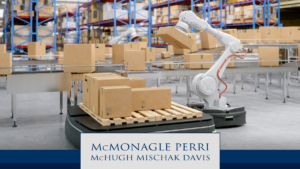 Robots are increasingly being used successfully in warehouses to meet demand for online orders. However some reports share statistics indicating that, as automation increases, so do the number of injuries.
Robots are increasingly being used successfully in warehouses to meet demand for online orders. However some reports share statistics indicating that, as automation increases, so do the number of injuries.
Historically, humans have done the majority of the work at warehouses, with workers walking nine miles or more during a shift to fulfill orders. Warehouses have been slower to adopt robots than other industries, such as manufacturing. When automated machines were finally introduced, early robots traveled along a fixed track to keep them from getting lost and out of harm’s way. That meant if their way was blocked, the machines stopped. Now automation is commonplace, with an estimated 27% of warehouses using robots and one technology company predicting that in the next five years nearly all warehouses will use automation. Amazon has already purchased a robotics company and recently launched a billion-dollar fund to invest in logistics and supply chain robotics.
Unlike their predecessors, today’s warehouse robots are free roaming machines that use artificial intelligence to navigate around obstacles. A 2020 study by The Center for Investigative Reporting reviewed internal records for 150 warehouses over four years and indicated that, at the most common kind of Amazon fulfillment center, serious injuries were 50% higher for those with robots than those without.
In 2021, a report released by the Strategic Organizing Center shared that workers at Amazon facilities sustained more than 34,000 serious injuries on the job—a serious injury rate more than twice as high as the rate at non-Amazon warehouses.
Though all reports conceded that correlation doesn’t always mean causation, most stressed that injury rates seem to increase with automation, whether it is due to workers being put under more pressure because of the unforgiving pace of robots and machines, or because of injury due to technical malfunctions, such as when one Oklahoma Amazon plant employee did the work of a conveyor belt after the machine shut down during a busy holiday season. He ended up incurring a life-changing injury.
Workplace accidents can happen anywhere, and if a technical malfunction caused your injury, you could receive compensation above and beyond Workers’ Compensation. Please reach out to us. We would welcome an opportunity to discuss the details of your case and see if we can help.
